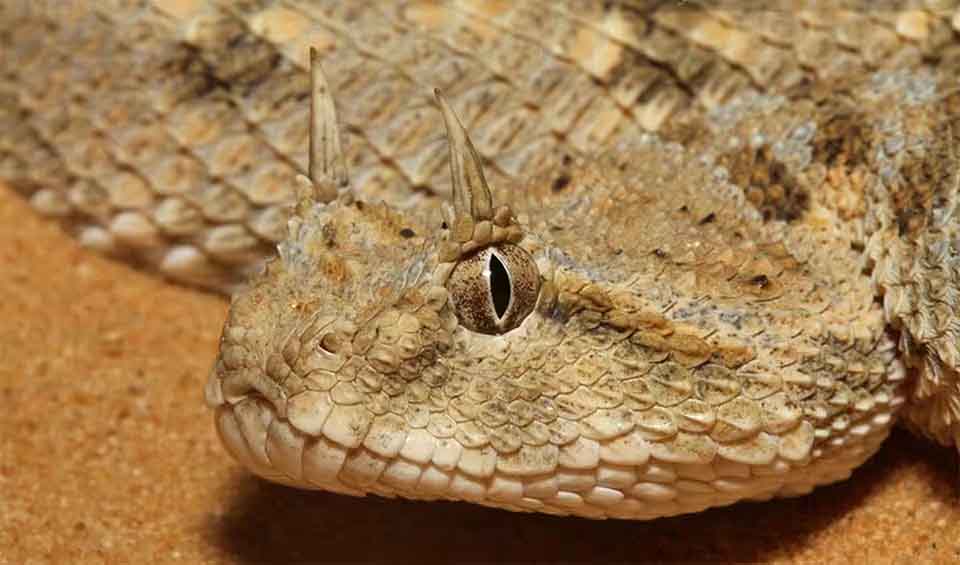Cerastes
Can detect vibrations in the sand, allowing them to sense the movement of potential prey or predators even when buried
Cerastes is a fascinating genus of venomous vipers that have adapted to thrive in some of the harshest environments on Earth. These snakes are found primarily in the deserts of North Africa and parts of the Middle East. The horned viper gets its name from the distinctive horn-like scales above its eyes, which give it a menacing appearance. The Sahara sand viper, on the other hand, lacks these horns but is equally well-adapted to desert life. Both species have a sandy or light brown coloration that helps them blend seamlessly into their arid surroundings.
Cerastes vipers have evolved a repertoire of remarkable adaptations to endure the harsh desert conditions. One of the most striking is their ability to ‘sidewind.’ This distinctive mode of locomotion enables them to traverse loose sand efficiently, without sinking. By lifting parts of their body off the ground and moving sideways, they minimize contact with the scorching sand, conserving energy in the process.
Another adaptation is their exceptional camouflage. Their sandy coloration makes them nearly invisible against the desert backdrop, allowing them to easily ambush prey. They are also known to bury themselves in the sand, with only their eyes and nostrils exposed, waiting patiently for an unsuspecting lizard or rodent to pass by.
Cerastes vipers are carnivorous, with a diet primarily consisting of small mammals, birds, and reptiles. Their hunting strategy is a masterclass in patience and precision. They lie in wait for their prey, biding their time until the target is within striking distance. Once detected, the viper strikes with lightning speed, injecting venom that swiftly immobilizes the prey. Their venom is potent and primarily hemotoxic, destroying red blood cells and disrupting blood clotting. This ensures a quick kill, allowing the viper to consume its meal without a struggle.
Species in this genus
Saharan horned viper
Despite its fearsome appearance, it is a shy and reclusive creature that would rather hide than confront a threat


